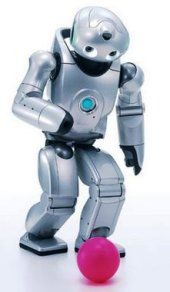 | « Back to article | Print this article |
 Catbot! Swiss scientists have developed a four-legged cheetah-cub robot that runs like a cat and could be used for search and rescue missions.
Catbot! Swiss scientists have developed a four-legged cheetah-cub robot that runs like a cat and could be used for search and rescue missions.
Thanks to its legs, whose design faithfully reproduces feline morphology, the robot has the same advantages as its model: It is small, light and fast.
The ‘cheetah-cub robot,’ a small-size quadruped prototype robot was developed by Ecole Polytechnique Federale de Lausanne EPFL's Biorobotics Laboratory (Biorob), Switzerland.
The purpose of the platform is to encourage research in biomechanics; its particularity is the design of its legs, which make it very fast and stable, researchers said.
Robots developed from this concept could eventually be used in search and rescue missions or for exploration.
This robot is the fastest in its category, namely in normalised speed for small quadruped robots under 30kg.
During tests, it demonstrated its ability to run nearly seven times its body length in one second.
Although not as agile as a real cat, it still has excellent auto-stabilisation characteristics when running at full speed or over a course that included disturbances such as small steps.
The robot is extremely light, compact, and robust and can be easily assembled from materials that are inexpensive and readily available.
The machine's strengths all reside in the design of its legs. The researchers developed a new model with this robot, one that is based on the meticulous observation and faithful reproduction of the feline leg.
The number of segments -- three on each leg -- and their proportions are the same as they are on a cat.
Springs are used to reproduce tendons, and actuators -- small motors that convert energy into movement – are used to replace the muscles.
"This morphology gives the robot the mechanical properties from which cats benefit, that's to say a marked running ability and elasticity in the right spots, to ensure stability," said Alexander Sprowitz, a Biorob scientist.
"The robot is thus naturally more autonomous," said Sprowitz.
"It's still in the experimental stages, but the long-term goal of the cheetah-cub robot is to be able to develop fast, agile, ground-hugging machines for use in exploration, for example for search and rescue in natural disaster situations," Biorob director Auke Ijspeert, said.
The study was published in the International Journal of Robotics Research.
The image is used for representational purpose only